- Home
- V. S. Naipaul
Beyond Belief: Islamic Excursions Among the Converted Peoples Page 9
Beyond Belief: Islamic Excursions Among the Converted Peoples Read online
Page 9
POWER UP
—DON’T BE CAUGHT
DEAD WITHOUT JESUS
There were stickers like this on many cars and small vans in Jakarta; there was religious need, the need for consolation beyond what men could give; evangelically, the half-converted country was up for grabs. The young taxi driver, from Sumatra, sharp-featured, reading me as a man from India, said in English that India was a very good place: it was full of mystics. Between us we didn’t have enough of a common language to develop this difficult subject; we let it drop. Sunk in his half-collapsed driver’s seat, his knees wide apart, the driver shook his slender khaki-clad legs in nervous irritation and, to pass the time, began teaching me Indonesian. After my long exciting afternoon, the day was dying on the highway in heat ripples and fumes; a migraine built up.
It was under the spell of Dewi’s own enchantment that I went to her village when I was in Sumatra. And, of course, everything was smaller than I had imagined: what Dewi had transmitted to me, what had held me in Jakarta, was the enchantment she had felt as a child.
Dewi’s mother took time off from the university at Padang to show me around the sacred places. With her was a visiting academic, a family friend, who had done much research on local ways. He told me that he had asked Dewi one day, when she was a child, what she wanted to do when she grew up. She said she wanted to be a Muslim religious teacher, an ulama. Only a man could be an ulama: the reply spoke not only of Dewi’s admiration for her datuk, but also of the Minangkabau feminine self-esteem that had come to her at the same time.
The family house we went to was not the house where Dewi had stayed as a child. It was the house of Dewi’s husband’s mother, who was herself a distant relative of Dewi’s. It was a modern bungalow. Glass louvers; heavy carved chairs in the Indonesian middle-class style; a big plastic ornament on a side table: a coconut tree with a lot of nuts, simple in outline, and in basic colors; two rows of concrete ventilation blocks at the top of the wall, the lozenge-shaped gap set vertically in the upper row, horizontally in the lower; a Mahabharat scene on one wall (an acknowledgment of the Hindu past or the adat), and on the facing wall an Arabic scroll. It was modern and middle-class and unremarkable.
But perhaps not unremarkable for Dewi’s young daughter, who had been sent by Dewi to live in the village, like Dewi at her age; and for whom this house and the rich, sheltering vegetation outside—the coconut, the bamboo, the banana, the rambutan, the sapodilla—might have been acquiring paradisal associations. She had come back from school, the little girl, while we were there; and now, having changed into a fresh frock, was sent off again, with a little book in one hand, and with every sign of content, to her religious class.
Take away the rambutan, and the vegetation might have been the vegetation of the Caribbean. But in the Caribbean the coconut and the bamboo and the banana were old imports, from this part of the world and from the Pacific. And here the sapodilla (the chico of India) was an import from South America. The similarity of vegetation had been arrived at in different ways, and the associations of the vegetation in the two places were quite different. The Caribbean vegetation spoke of the slave plantations and now of the tourist trade. This landscape remained the sacred ground of an ancient clan.
The surau or private mosque of Dewi’s maternal great-uncle—where, because of his great authority, though contrary to custom, he had lived with his youngest wife—was in a coconut grove that seemed derelict.
Labor was scarce; people preferred going to the towns and the factories; there was hardly anyone to clean the ponds and waterways. In this climate, where things grew fast, chaos quickly came and could look beautiful. Dead coconut branches hung down like giant bird feathers from the rotting hearts of trees; creepers ran up coconut trunks and brought them down across fern-fringed ponds or water channels; and then the collapsed trunks were skeined with scum, layer upon layer, on which weeds could soon get a footing. The African water hyacinth, a universal tropical parasite in brilliant green and lilac, choked open water into swamp. And in the gloom of the old grove everything, including the sky, could be reflected in what clear water remained.
The surau was in ruin; it wasn’t going to last much longer. It was unexpectedly small, of wood and corrugated iron. The wood had rotted gray and the darkened corrugated iron had been torn loose in places. Architecturally, though it didn’t have the horned roof, it was related to the traditional Minangkabau house; and even in ruin the principal building (there were two plainer dependencies) had its elegance. It had a lower story with a roofed verandah all around, the roof looking like a corrugated-iron fringe. The smaller upper floor rose out of this fringe, and was topped with a steep pyramidal roof, rising along its slightly curving lines to a tall finial. Much of the architectural energy of the building had gone into this roof. It would have sufficiently expressed the purpose of the surau, though it had no overt Islamic sign, no crescent or crescent and star. The use of these emblems was comparatively new in Indonesia. Mosques could be like other buildings; though now, with the new Islamic mood, and to Islamize ordinary buildings, there were shops in Java displaying in their front yards silvery sets of domes and crescents in various sizes (in just the same way as other shops displayed furniture or motor-car wheels).
Dewi’s ancestral horn-roofed house—again, smaller than the one I had in my imagination—had been repaired and furnished. But I wouldn’t have liked to spend a night there. I would have felt imprisoned in the long-house architecture. I would have needed a verandah, or other space around me, or space broken up in another way. This was a kind of house for people who lived outdoors as much as indoors, and to whom outdoors was also home and theirs. It was not a place for strangers.
Near here were the bushes where, during the preparations for Dewi’s wedding, meat had been thrown to appease the neglected spirits of forest and springs with whom the clan had entered into a contract, many hundreds of years before, when they had cut down the forest. Just beyond the shade were the rice fields (bounded now by coconut groves) for which that contract had been entered into: uncleaned in places, with entangling water weeds, and with open, loose-looking patches in the ripening rice where the rats had been. As in so many things here now, the lack of hands showed.
I asked Dewi’s mother how old she thought the rice fields here were. She said that a rice field’s age could be gauged from the depth of the mud. These fields were about a thousand years old. You could sink in this mud up to your armpits. The academic with her said he rather thought they would be two thousand years old. Hard to grasp: this field, a particular kind of crop, going back to the times of Augustus. (And on the winding mountain road between Solok and Padang there was a forest reserve which showed what the primal vegetation might have looked like: dense, old-looking, lusterless, a dark gray-green, without the freshness or lightness of cultivated plants or trees.)
And yet very little was known of this immense history. There were no documents, no texts; there were only inscriptions, and not many of those. Writing itself was one of the things that came from India, with religion. All the Hindu and Buddhist past had been swallowed up. Without writing, without a literature, the past constantly ate itself up. People’s memories could go back only to their grandparents or great-grandparents. The passing of time could not be gauged; events a hundred years old would be like events a thousand years old. And all that remained of two thousand years of great social organization here, of a culture, were the taboos and earth rites Dewi had told me about. I heard about some more now from her mother. For instance, before the rice harvest you went out to the ripe field and cut seven stalks. You hung these up on your house. Only then you could start the full cutting. No one knew why. The original prompting had vanished somewhere down the centuries.
The overthrow of the old religions—religions linked to the earth and animals and the deities of a particular place or tribe—by the revealed religions is one of the haunting themes of history. Even when there are texts, as with the ancient Roman-Christi
an world, the changeover is hard to follow. There are only indications. It can be seen that the earth religions are limited, offering everything to the gods and very little to men. If these religions can be attractive now, it is principally for modern aesthetic reasons; and even so, it is impossible to imagine a life completely within them. The ideas of the revealed religions—Buddhism (if it can be included), Christianity, Islam—are larger, more human, more related to what men see as their pain, and more related to a moral view of the world. It might also be that the great conversions, of nations or cultures, as in Indonesia, occur when people have no idea of themselves, and have no means of understanding or retrieving their past.
The cruelty of Islamic fundamentalism is that it allows only to one people—the Arabs, the original people of the Prophet—a past, and sacred places, pilgrimages, and earth reverences. These sacred Arab places have to be the sacred places of all the converted peoples. Converted peoples have to strip themselves of their past; of converted peoples nothing is required but the purest faith (if such a thing can be arrived at), Islam, submission. It is the most uncompromising kind of imperialism.
5
KAMPUNG
MARIMAN AND FURQAN were both CIDES researchers. Mariman was twenty-three, Furqan about the same age; and they would have known that through CIDES they had had a good start in the big city. Mariman, in fact, was already something of a star. Adi Sasono had spoken of him as a kind of CIDES success story, and I had asked to meet him.
So now, at Adi’s prompting, Mariman had come to the hotel, with Furqan as his interpreter. Mariman didn’t speak English.
We went to the Kintamani, the open pavilion (said to be in the Javanese style) in the gardens of the hotel, between the tennis courts and the big pool. At lunchtime in the Kintamani there was a kind of buffet grill; in the evening there was the same, with a hotel-style local cultural show. The afternoon was a nondescript in-between time, with empty chairs, sunlight angling in from the pool side, the shadows of trees on the other side, and a breeze.
Furqan—whose last name, Alfaruqiy, was as Arabic as his first—was from Sumatra. Mariman was Javanese.
Furqan said, “We are different. We from Sumatra are travelers, even all over the world. So we don’t get homesick. Mariman does. With Javanese people they have a proverb: ‘Eat or not eat, we have to live together.’ It means that Javanese people should live in Java. They feel that Java Island is much better than other places. But now with education they can move out.”
And there was another reason why Mariman was homesick, Furqan said: Mariman’s parents were divorced. I noted that down as just another background detail. It was only later, when Furqan and Mariman had left, that certain questions about that occurred to me, and it was a cumbersome business to get answers at long range: getting through on the telephone to Furqan at CIDES, putting questions to him, and then waiting for him to give Mariman’s responses. So it was only later that I realized that Mariman was one of the seventeen children of his father’s two families living in the same village, but separately. And it was only much later, as I traveled, that I realized that the Muslim pattern of multiple marriage and easy divorce was not just a matter of masculine libido: it led to damaged families. It led to a kind of semi-orphaned society. A family abandoned by a father, in order to start a second or a third: it was a story that came up again and again. That was what lay behind Mariman’s homesickness. But I didn’t think to ask more at the time, and never got to know when Mariman’s father divorced his mother and how old Mariman was.
When Mariman was a child in the kampung (or village) he looked after sheep and buffalos for people. He was paid in kind, lambs, young buffalos. The time came when he had twenty-two sheep. He sold some to go to school. He sold two sheep first of all, one for forty-two thousand rupiah, twenty dollars, and another for fifty thousand, twenty-four dollars. He sold them to the cattle broker his father dealt with; his father was a trader in buffalos.
Why did he want to go to school?
“To deepen his knowledge of Islam.”
This would have been because of his father. Mariman’s father had gone to the village pesantren. He had a cupboard for keeping books. The cupboard was kept closed, but the books were known to be there. The father was an educated man who could read and write Arabic and even speak it a little.
Furqan said, “Mariman is unusual in Java because his father trained him in religion. He was educated by his father in praying when he was ten years old. As a trader in buffalos his father made enough money to go on the pilgrimage. This was in 1985.” Mariman was thirteen then. “He was very proud that his father went to Mecca. His father came back wearing the white hajji’s cap. Before that he wore a black cap. He was the first person in the village to go on the hajj. Now there are three hajjis in the village.”
Mariman said, as if commenting on Furqan’s translation, “Pilgrimage is the highest duty.”
With this background of books and devoutness, Mariman in 1990, when he was eighteen, was admitted to the Muslim university in Malang, in eastern Java.
To be admitted was one thing. To support himself was another. And though he didn’t say, it must have been about this time that his father and mother were divorced. Mariman needed twenty-five thousand rupiah a month, about twelve dollars, for general expenses, and, for food, twenty pounds of rice. He went back home to his kampung for the rice; and his mother gave the twenty-five thousand rupiah. She ran a little village shop or stall selling vegetables, small street foods for children, and things like soap and sweets.
To save money, he rented a room far from the university; it cost ninety thousand a year, about forty-four dollars, or about eighty cents a week. In this room he cooked his own rice; and he bought cooked vegetables from stalls. He seldom ate meat or fish, and he walked to the university. So his living expenses came to less than ten thousand a month, about four dollars eighty, or about sixteen cents a day; and he was able to save fifteen thousand of the twenty-five thousand rupiah he got every month from his mother. In the third year he was able to buy books.
There was a fascination for me (and for him, and for Furqan) in these tiny sums, on which a man could yet live. It was like a sport in itself, a version of the pleasures of Lilliput. (There was something similar, too, in the memoirs of his very early days, by William Chambers, the nineteenth-century Scottish publisher.)
When he was twenty-one, in 1993, Mariman began to write. Extraordinary for someone who had begun life as a herdsman; but the ambition, that idea of possibility, would surely have come to him from his now absent father, an educated man, with books in a locked chest. Mariman wrote articles on economic matters and they were published in Pelita, a Jakarta daily. For every published article he was paid fifty thousand rupiah, nearly ten dollars. This high payment shattered his delicate balancing of tiny sums, made him a new man. He began to feel he had a future. He felt this more strongly when the Muhammadiyah university in Malang invited him to be a lecturer. He asked his mother and his father. They were small people, but they knew about buying and selling. His mother did that every day, with her little stall, and his father dealt in buffalos. They said the salary was too low, and Mariman turned the university down. He decided then to leave the kampung and come to Jakarta.
Jakarta was at the other end of the long island of Java. The fare was fifty thousand rupiah. One article in Pelita settled that. He had clothes. And he had lodging: his mother’s sister agreed to take him in. She had a house with three small rooms in a slum in south Jakarta. Mariman was a little bit frightened to be in Jakarta, because for the first time in his life he had no close family within reach. But he didn’t mind about the conditions. They had to pump water for the bathroom and the kitchen. He lived like that, in the small house in South Jakarta, for seven months, from November 1994 to the end of June 1995—that was just six weeks ago, but already (a day is very long for a young man) that life felt far away, and Mariman felt he couldn’t go back to living in those conditions. And though he didn
’t say, it was no doubt during that time that he became a CIDES researcher.
I asked Furqan, “He misses the village?”
“Yes. He misses his mother. He would like the village or kampung atmosphere in Jakarta, but he can’t get it.”
“What does he mean by the kampung atmosphere?”
“The respect for older people, praying together in the mosque. But he’s not frightened of Jakarta now. He tries to make the kampung atmosphere in his neighborhood. And he has a girlfriend. He plans to get married as soon as possible.”
But Mariman had hardly begun to make his way.
I asked Furqan, “Does he feel his life has changed so completely in the last seven months?”
“He feels he has made a big jump intellectually. But he has become a consumer.”
Already, that piety, that bit of tutored wisdom. I asked, “What does he mean by that?”
“He is influenced by the consumerism of the big city.”
“He is wearing a nice shirt and a nice colorful tie. Is that what he means by consumerism?”
The shirt was carefully chosen: white, with button-down collar, the shirt and the broad striped tie sitting flat on his almost flat chest. There was a pen clipped to the pocket. He wore belted beige trousers; the belt emphasized his narrow waist. And he wore gold-rimmed glasses. Everything represented expenditure, thought; he perhaps had never dressed so carefully in his life.

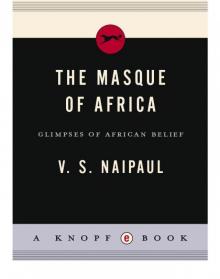 The Masque of Africa: Glimpses of African Belief
The Masque of Africa: Glimpses of African Belief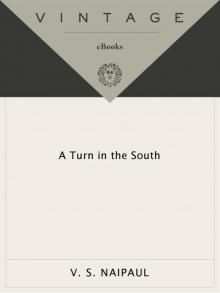 A Turn in the South
A Turn in the South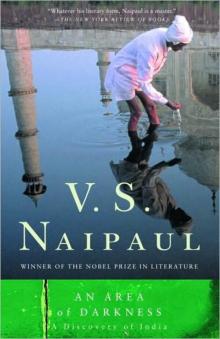 An Area of Darkness
An Area of Darkness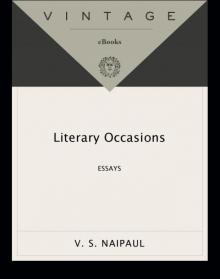 Literary Occasions: Essays
Literary Occasions: Essays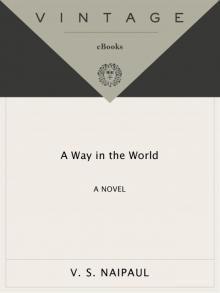 A Way in the World
A Way in the World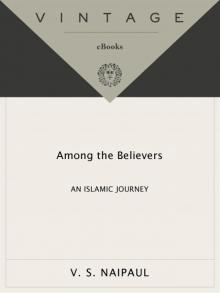 Among the Believers: An Islamic Journey
Among the Believers: An Islamic Journey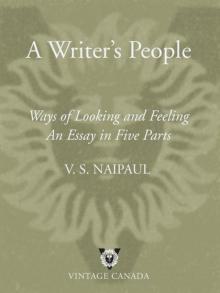 A Writer's People: Ways of Looking and Feeling
A Writer's People: Ways of Looking and Feeling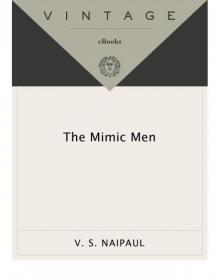 The Mimic Men: A Novel
The Mimic Men: A Novel Collected Short Fiction
Collected Short Fiction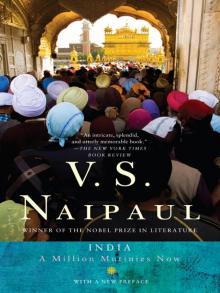 India: A Million Mutinies Now
India: A Million Mutinies Now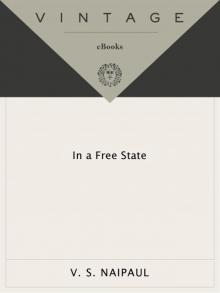 In a Free State
In a Free State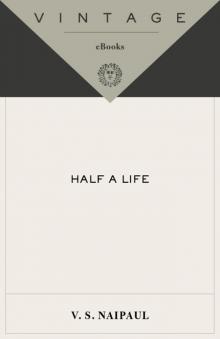 Half a Life
Half a Life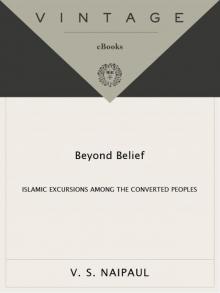 Beyond Belief: Islamic Excursions Among the Converted Peoples
Beyond Belief: Islamic Excursions Among the Converted Peoples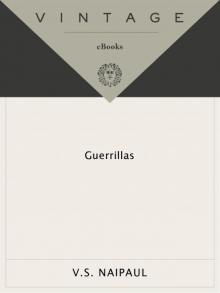 Guerrillas
Guerrillas A House for Mr. Biswas
A House for Mr. Biswas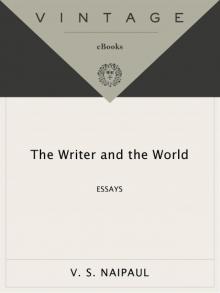 The Writer and the World: Essays
The Writer and the World: Essays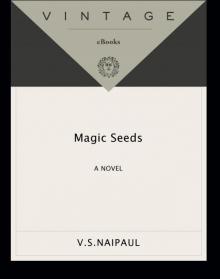 Magic Seeds
Magic Seeds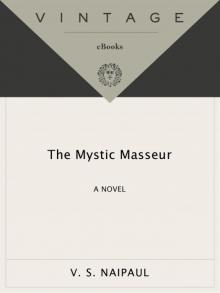 The Mystic Masseur
The Mystic Masseur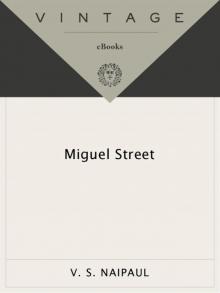 Miguel Street
Miguel Street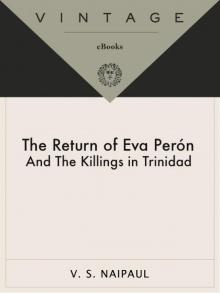 The Return of Eva Perón, With the Killings in Trinidad
The Return of Eva Perón, With the Killings in Trinidad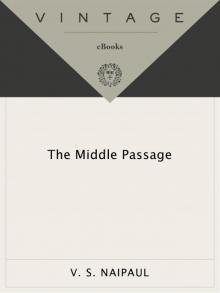 The Middle Passage
The Middle Passage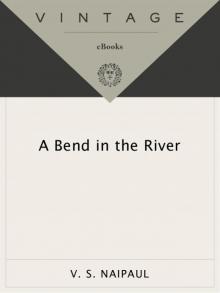 A Bend in the River
A Bend in the River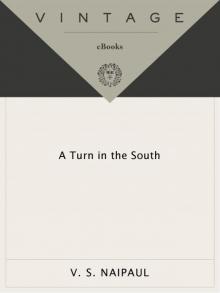 A Turn in the South (Vintage International)
A Turn in the South (Vintage International)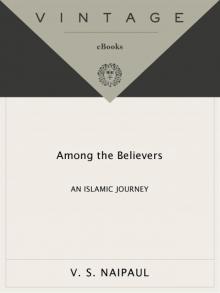 Among the Believers
Among the Believers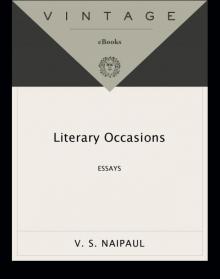 Literary Occasions
Literary Occasions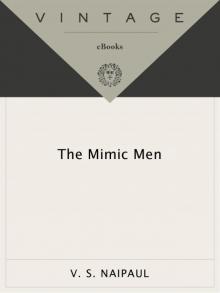 The Mimic Men
The Mimic Men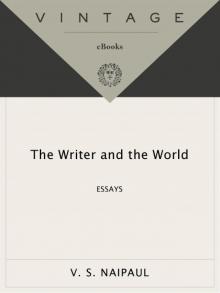 The Writer and the World
The Writer and the World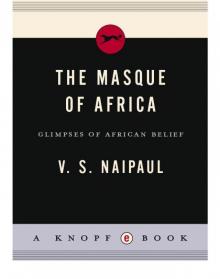 The Masque of Africa
The Masque of Africa